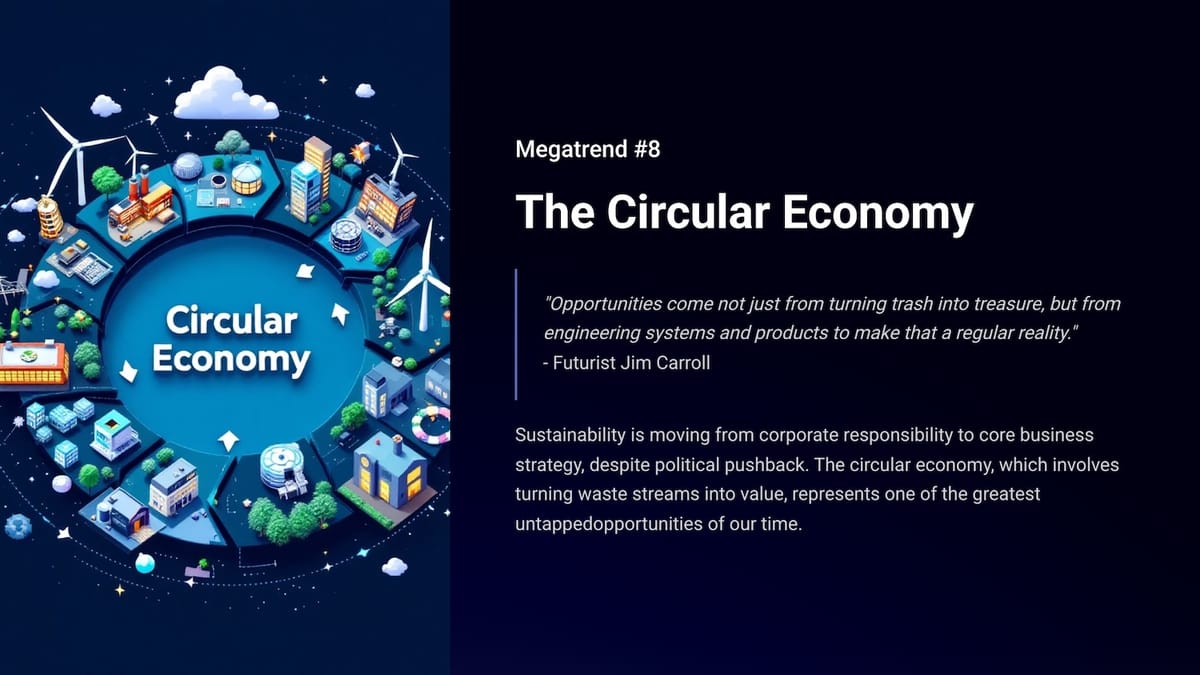"Opportunities come not just from turning trash into treasure, but from engineering systems and products to make that a regular reality." - Futurist Jim Carroll
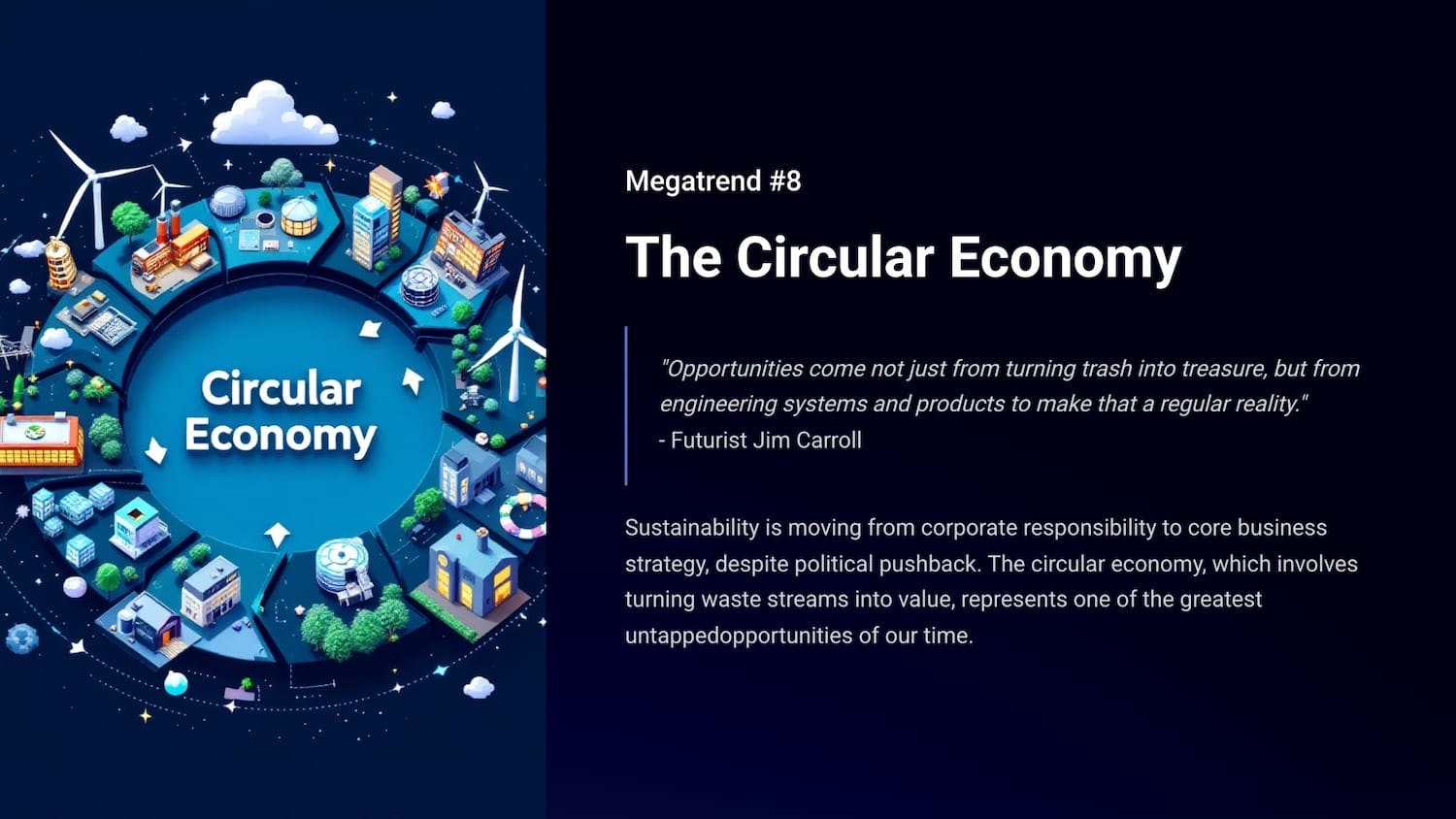
(Futurist Jim Carroll is writing a series on 30 Megatrends, which he first outlined in his book Dancing in the Rain: How Bold Leaders Grow Stronger in Stormy Times. The trends were shared in the book as a way of demonstrating that, despite any period of economic volatility, there is always long-term opportunity to be found. The book is now in print - learn more at dancing.jimcarroll.com)
Sustainability is moving from corporate responsibility to core business strategy, despite political pushback. The circular economy, which involves turning waste streams into value, represents one of the greatest untapped opportunities of our time - a multi-trillion dollar opportunity!
Want to dig deeper? There's a full PDF here - the summary is below.
What's it all about? Essentially, the way we produce and consume goods is undergoing a fundamental shift. For decades, our economy has largely operated on a linear "take-make-dispose" model, leading to significant waste and depletion of natural resources. Everything we build is thrown away; there is nothing in the design of the product itself that presumes reuse and recycling. However, that is changing, and a new paradigm is emerging: the circular economy. This regenerative system is designed to eliminate waste, keep products and materials in use, and regenerate natural systems, presenting a strategic imperative for the coming decade and unlocking trillion-dollar opportunities.
Perhaps the best example of what it is all about? Apple, at this point, essentially designs the iPhone and other products not only for sale to the consumer, but for eventual disposal, with deconstruction of returned devices for parts, materials, and more. That's called 'design for deconstruction,' and it not only makes sense from an environmental perspective, but from an economic perspective.
With that example in mind, the interesting thing is that, unlike many sustainability or other corporate responsibility initiatives, which seem to be thrown away as political sands shift, this one isn't going away. It isn't just a buzzword or a niche aspect of corporate social responsibility. It's evolving into a core business strategy. Why? It's undergone a transition already in the way it is treated:
- Past: Siloed Compliance - Sustainability was often viewed as a compliance burden or a PR exercise, relegated to specialized departments.
- Present: Strategic Integration - Circular principles are becoming fundamental to business strategy, recognized as powerful opportunities for value creation.
- Future: Core Business Logic - Circularity will serve as the foundation of business models, driving innovation, competitive advantage, and long-term partnerships with customers.
How big an opportunity is it? Pretty big - estimates going from $339 billion in 2022 to $8 to 10 trillion by 2035!
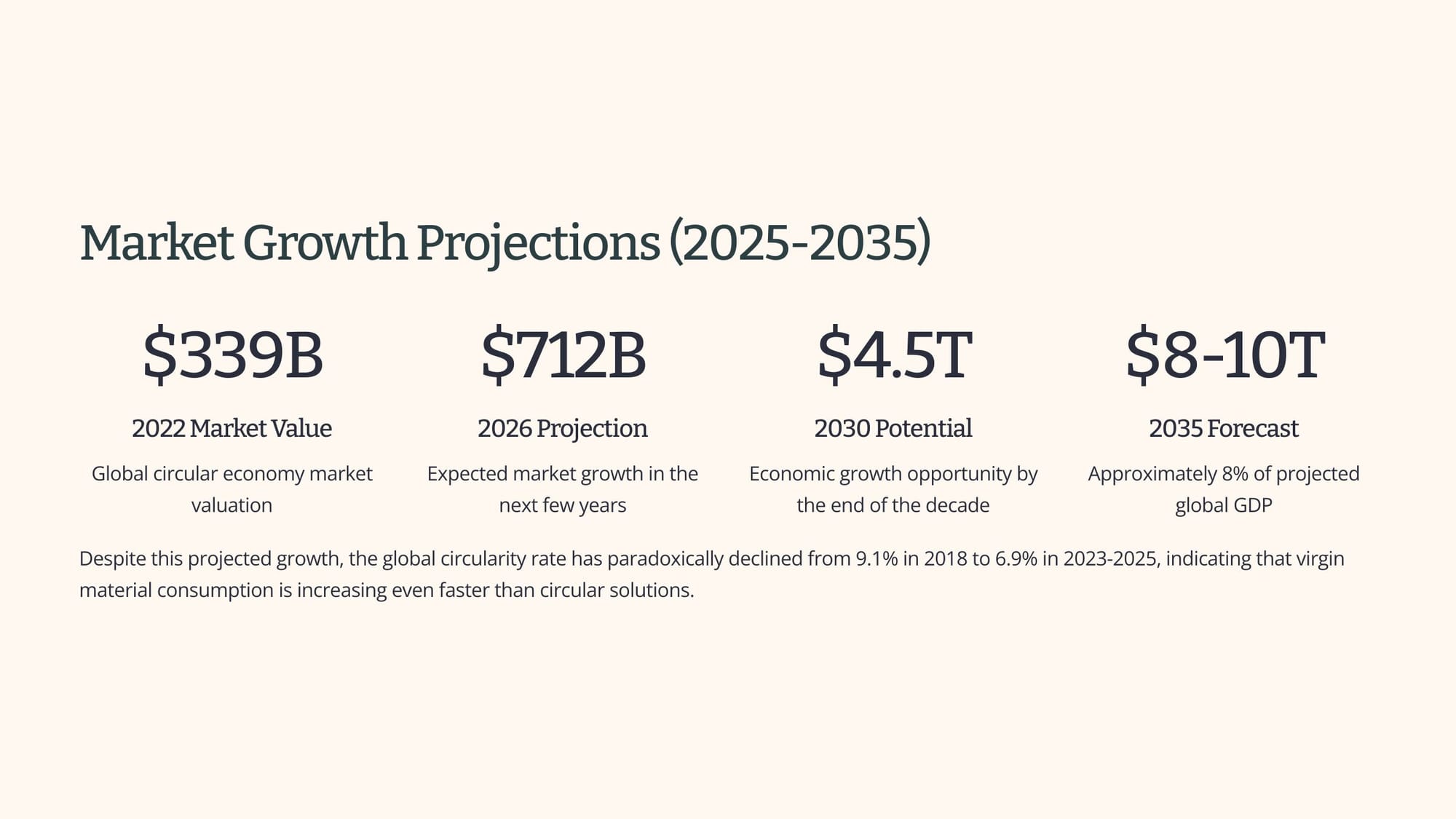
The economic arguments are compelling:
- Cost Savings: Reduced reliance on virgin materials and minimized waste management expenses.
- New Revenue Streams: Circular models like Product-as-a-Service open entirely new revenue opportunities beyond traditional sales.
- Enhanced Innovation: Creative solutions for reusing and recycling materials stimulate product and process innovation.
- Risk Mitigation: Reduced dependence on finite resources minimizes vulnerability to price fluctuations and supply chain disruptions.
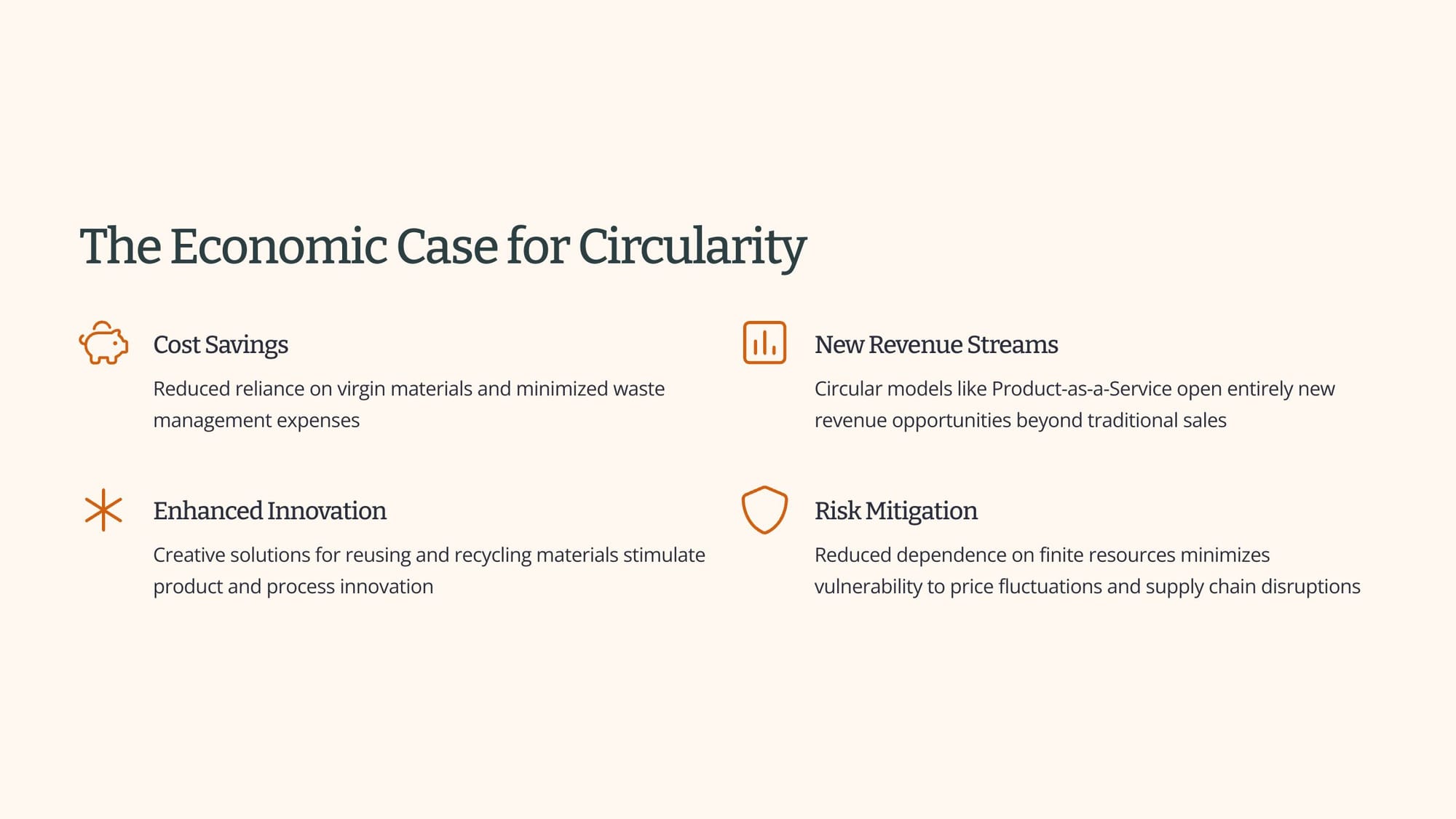
There are a few ideas with the trend: one is designing products to last longer.
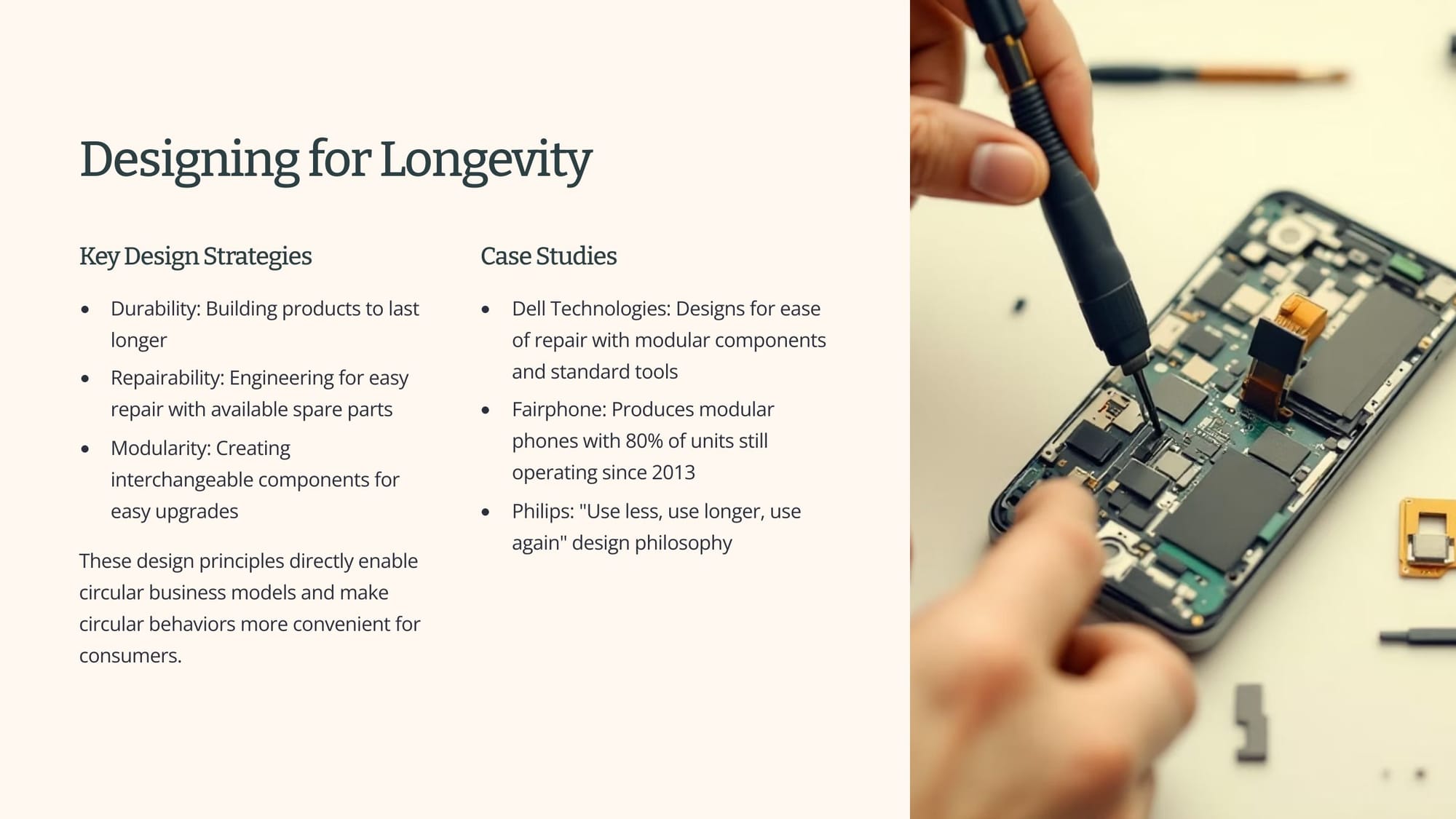
Another is to design them for deconstruction, as previously mentioned.
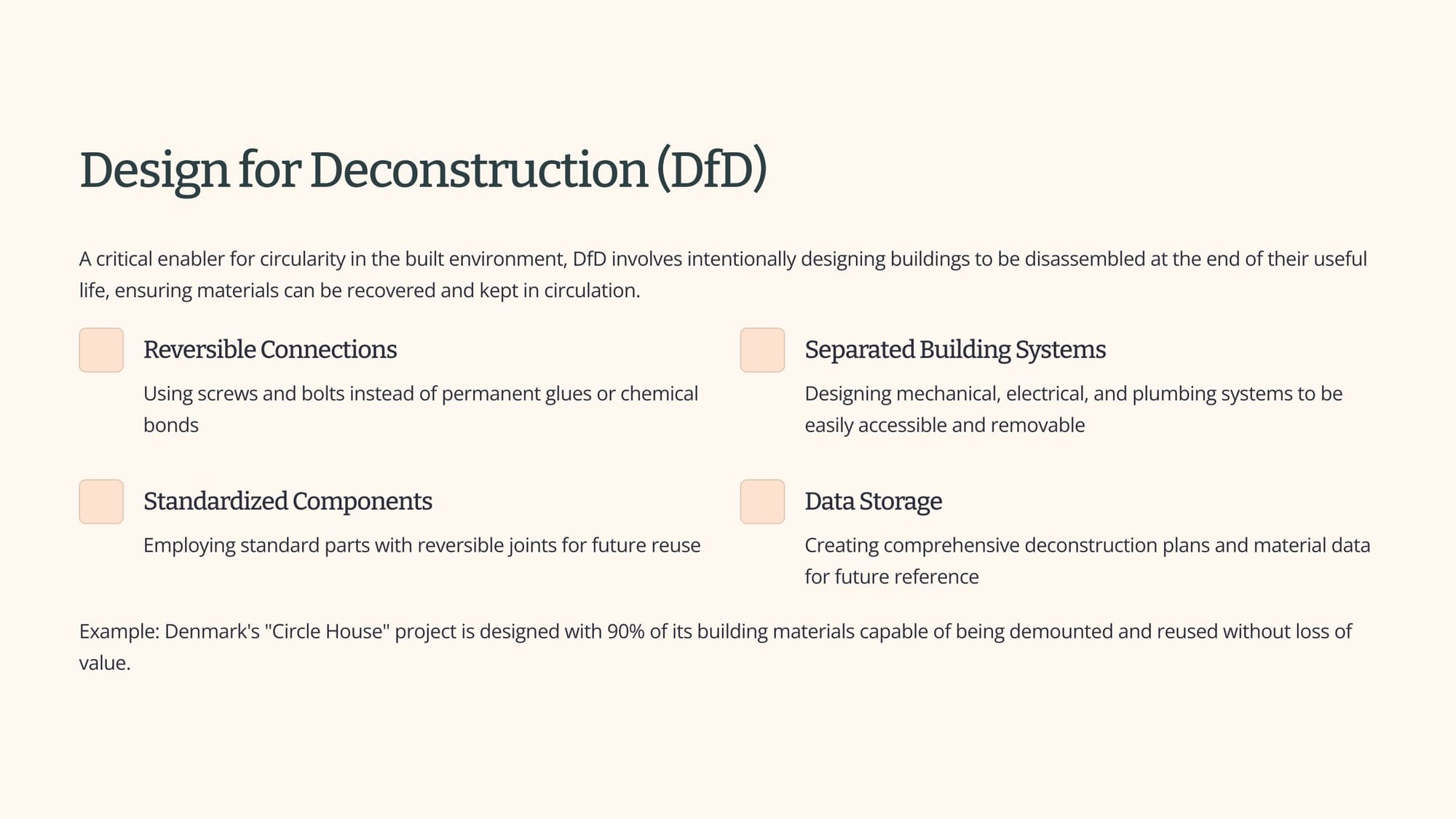
And a third is the integration of advanced recycling technologies into every aspect of the supply chain - so that supply chains don't just get the product to the consumer, they also take over when the consumer sends it back!
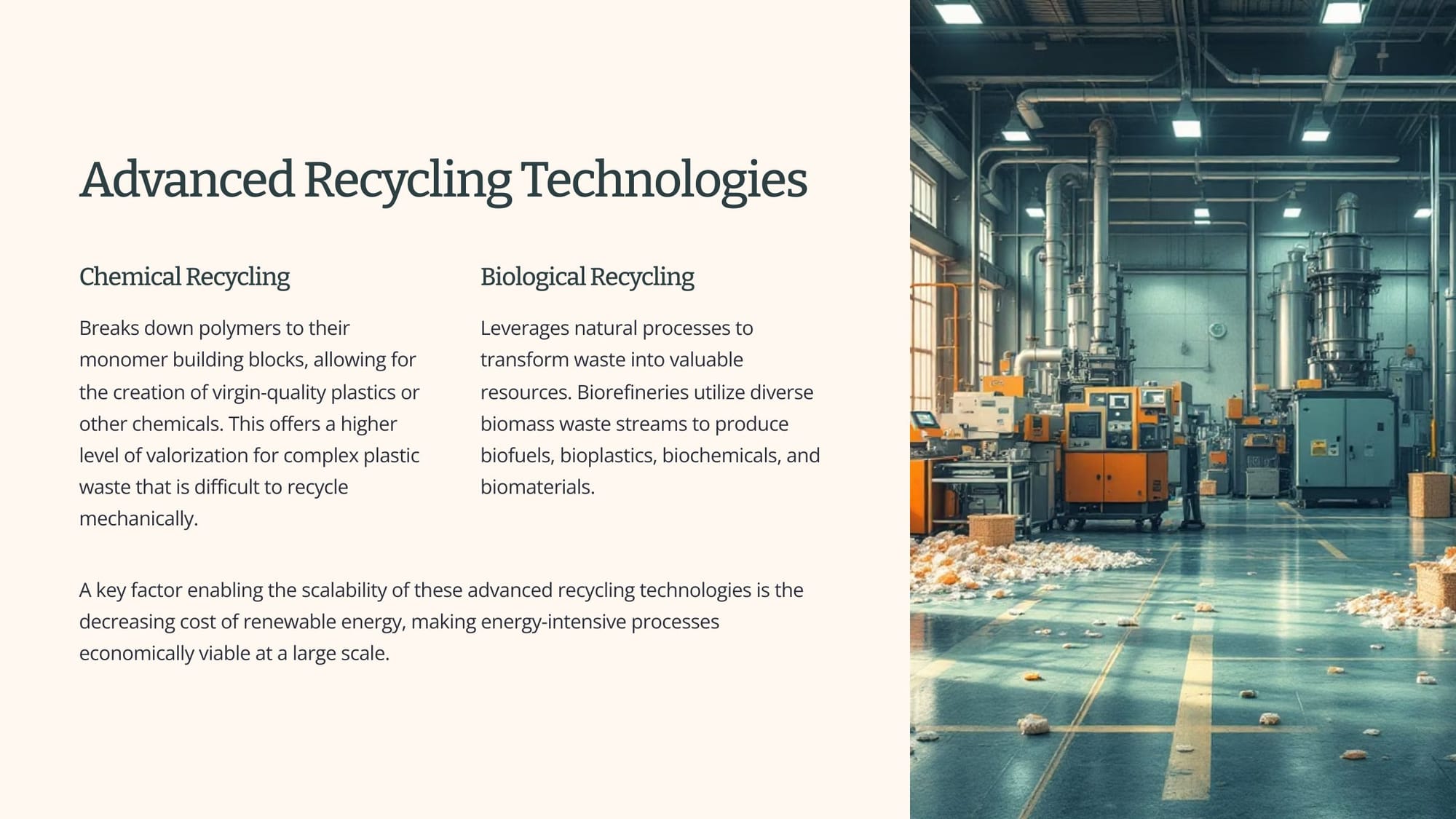
With all this in mind, there are many sector-specific opportunities.
The electronics sector is a major producer of e-waste, which contains both valuable precious metals and hazardous substances, making it a prime candidate for circular interventions.
- Enhanced durability and repairability
- Modular designs with swappable parts
- Product-as-a-Service business models
- Advanced material recovery technologies
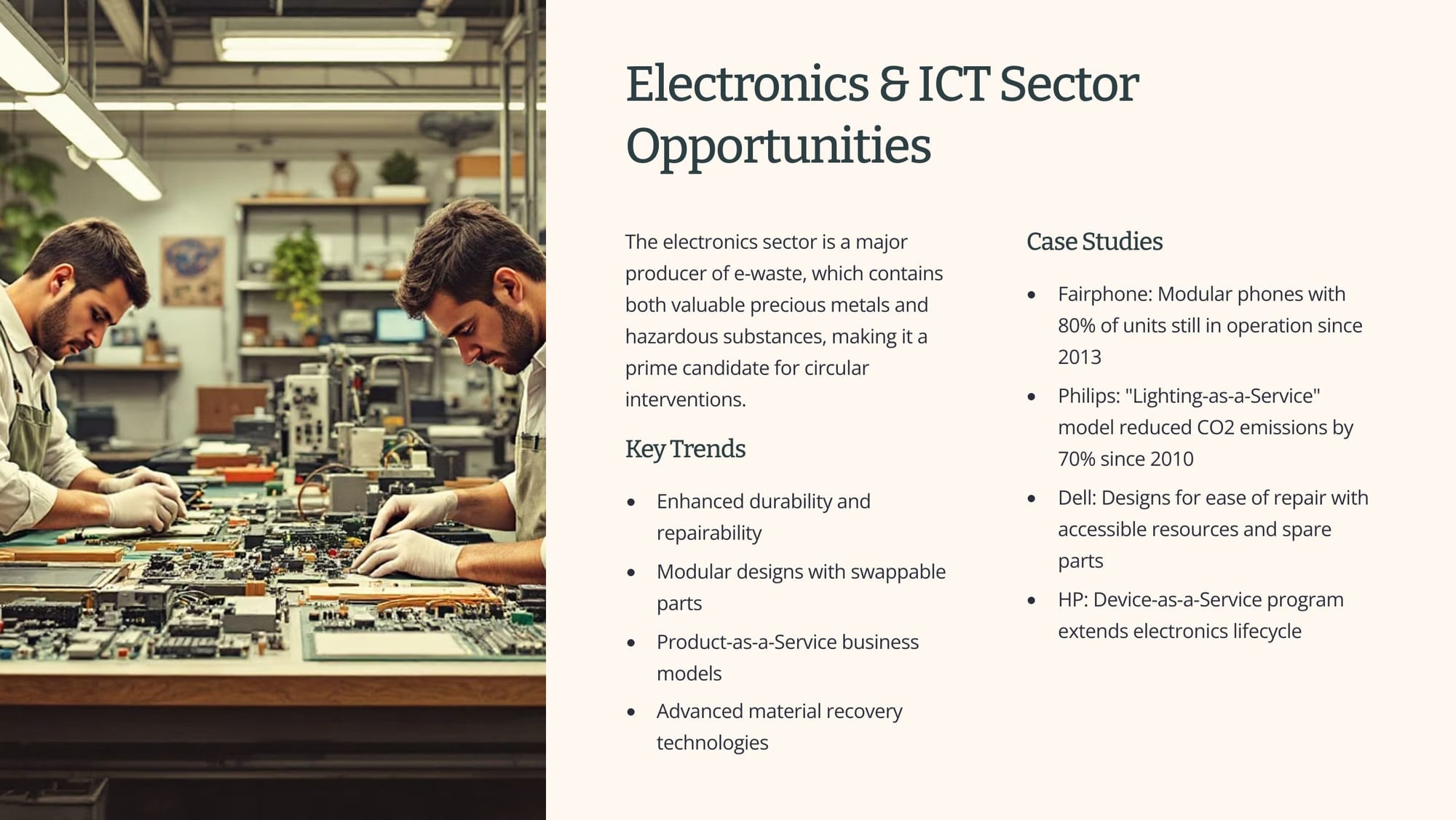
This packaging and plastics sector is ripe for circular innovation.
- Reusable Packaging: Loop (TerraCycle) partners with major brands to offer reusable packaging for common products, keeping millions of single-use containers out of waste streams.
- Bioplastics Growth: The bioplastics market is projected to grow from $9.5 billion to $73.5 billion by 2033, with packaging representing the largest segment.
- Corporate Commitments: PepsiCo aims for 100% reusable, recyclable, or compostable packaging by 2030. Coca-Cola targets recovering every can and bottle sold by 2030.
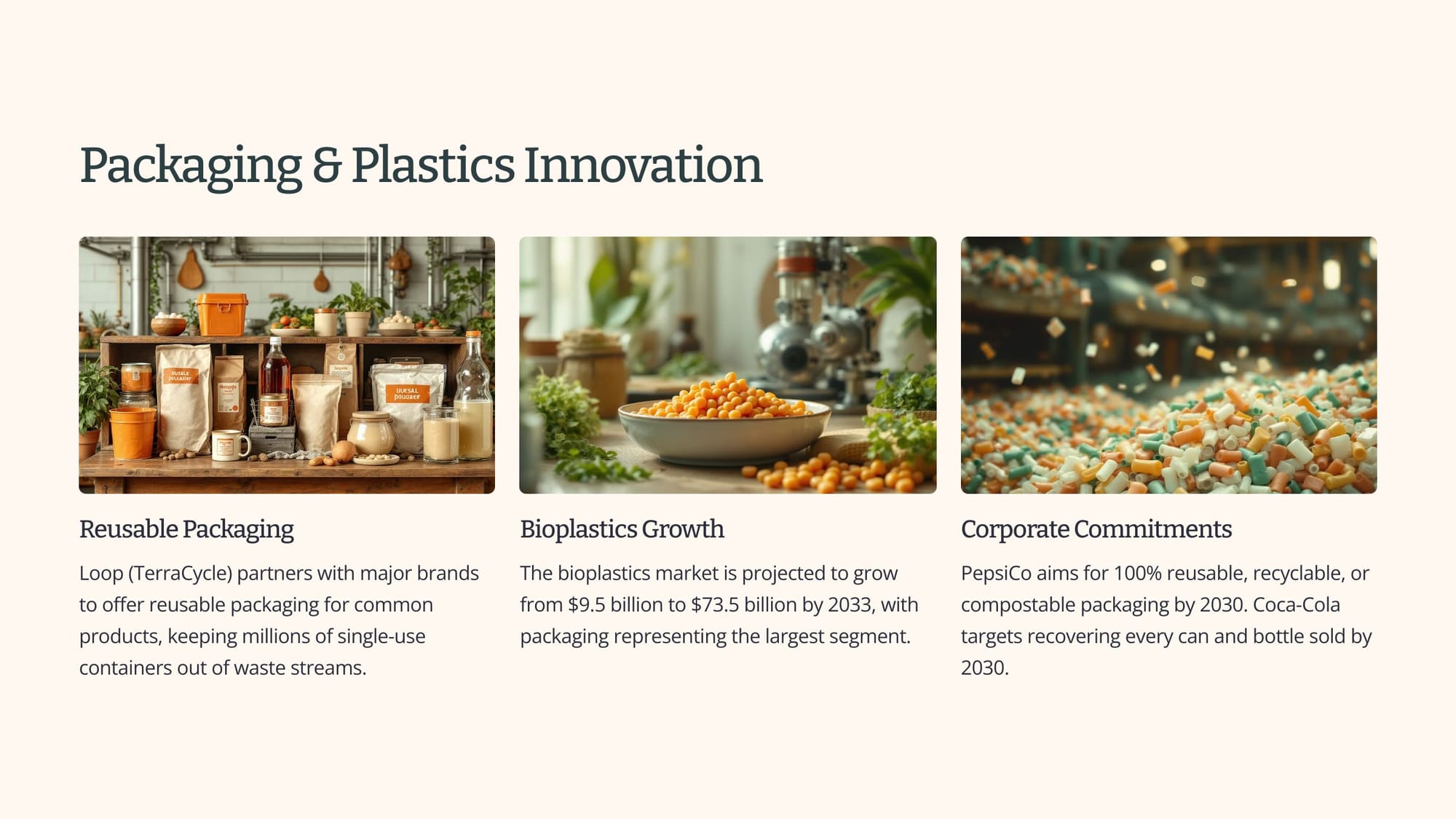
The construction and demolition sector is identified as a "$212.7 billion goldmine" for circularity. Recycled concrete aggregates alone could create $122 billion by 2050.
- Increased adoption of sustainable building materials
- Design for deconstruction (DfD) principles
- "Urban mining" of demolition sites
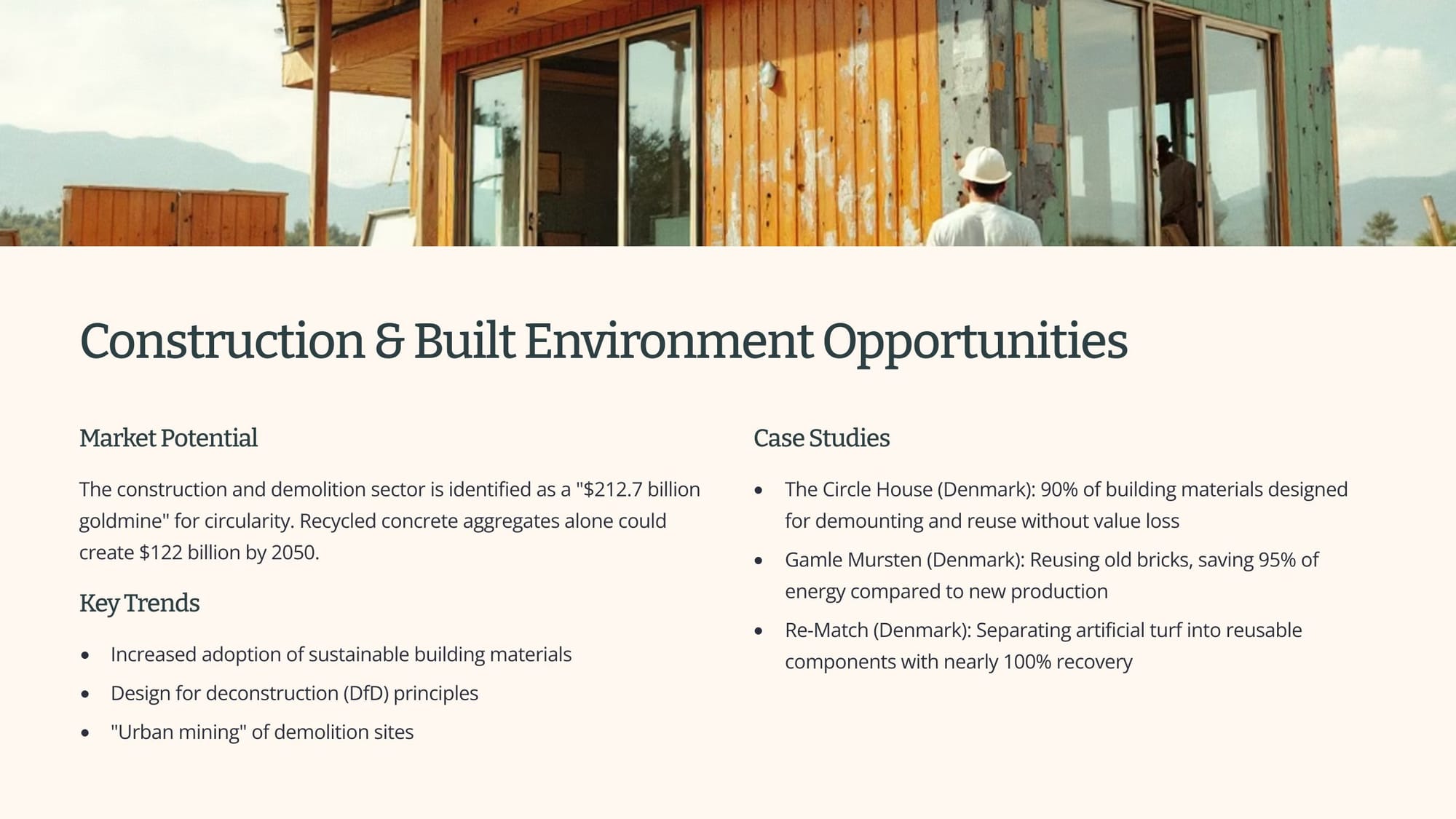
The fashion industry is moving towards more sustainable and circular models.
- Recommerce Growth: Resale, vintage, and rental models projected to generate over 10% of revenue for most brands within five years. Reformation already sees 17% of business from circular models.
- Repair & Maintenance: Patagonia's Worn Wear program offers repair services, an online marketplace for used gear, and a trade-in program to keep garments in circulation longer.
- Material Innovation: Adidas implements a "three-loop" circular strategy using recycled materials like Parley Ocean Plastic and designing 100% recyclable performance running shoes.
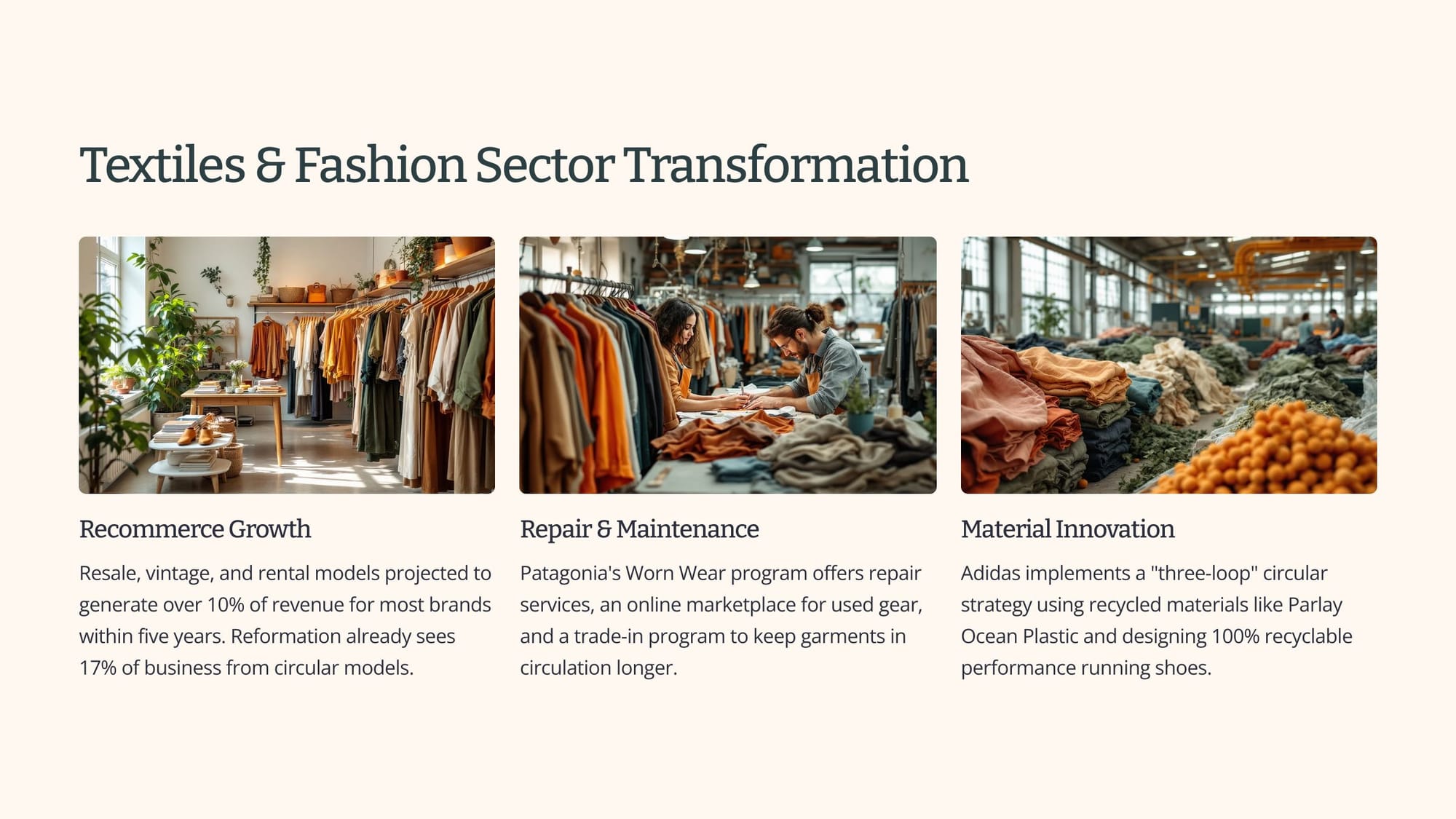
Food and agriculture? Approximately one-third of global food production never reaches plates, and organic waste in landfills is a major source of methane emissions.
- Food waste reduction initiatives
- Improved water and nutrient efficiency
- Regenerative agriculture practices
- Precision fermentation technologiesAs a megatrend, the circular economy is not merely an environmental initiative; it is a powerful framework for economic growth, innovation, and resilience. Not to mention the fact that there is a huge amount of money to be saved and made!
Keep your eye on this one. Read the PDF for more!
Futurist Jim Carroll's book, Dancing in the Rain, is a must-read for anyone looking to discover the opportunities of tomorrow, today.

